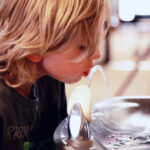by: December 10, 2024
 (NaturalHealth365) It is no secret that ADHD is on the rise. However, the medical community has not yet identified a clear cause for the increase in ADHD prevalence. It has long been suspected that ADHD is tied to lead exposure, especially exposure at an early age. Lead exposure can also cause seizures, hearing loss, constipation, vomiting, and developmental delays.
(NaturalHealth365) It is no secret that ADHD is on the rise. However, the medical community has not yet identified a clear cause for the increase in ADHD prevalence. It has long been suspected that ADHD is tied to lead exposure, especially exposure at an early age. Lead exposure can also cause seizures, hearing loss, constipation, vomiting, and developmental delays.
Instead of pushing Big Pharma pills (and shots) on our kids, schools should start testing lead levels. The details of such potential lead exposure were recently highlighted in a study published in Science of The Total Environment.
Lead exposure is quickly becoming a public health crisis that weakens the adults of tomorrow
Environmentalists and physicians often highlight how the Baby Boomer generation was exposed to lead during their formative years. Similarly, much attention has been given to Generation Z’s microplastic exposure. However, there’s less awareness about the potential lead exposure faced by Generation Z and Generation Alpha, especially in schools.
Lead is a dangerous contaminant because it cannot be seen or smelled, making it an invisible threat. In children, even minimal exposure can cause a range of serious health issues. While lead-based paint was banned for residential use in the late 1970s, today’s students may still encounter lead through the water systems in older school buildings.
Many schools in the United States were built before 1986, the year Congress amended the Safe Drinking Water Act to restrict the use of plumbing materials and pipes that leach lead. In these older schools, lead can contaminate water as it leaches from plumbing materials, fixtures, and pipes.
A 2018 Government Accountability Office (GAO) investigation revealed that nearly 40% of school districts tested showed elevated lead levels in their water systems. State-level studies have uncovered even more alarming statistics. Nearly 50% of schools tested in some states had lead contamination in water consumed by children. In Portland, 99% of public schools tested positive for lead in 2016. Similarly, a 2018 study in Detroit found lead in 16 out of 24 schools tested.
The evidence is clear: lead exposure remains a significant risk, and no level of lead is safe for children.
How to prevent your child from exposure to harmful lead at school and also at home
A child who goes through the typical school system spends about 15,600 hours in school, often drinking water from fountains or sinks. If your child’s school water supply hasn’t been tested for lead, request testing to be conducted.
Parents should also have their home water tested for lead. Internal plumbing materials in homes can sometimes contain lead, which can leach into the water. Lead is odorless and invisible once dissolved in water, making it difficult to detect without testing. By testing your home’s water, you can ensure your family’s water is safe.
Once your home’s water has been tested and found safe, fill a stainless steel bottle for your child to bring to school. Consider providing an extra water bottle for their locker so they don’t have to rely on potentially lead-contaminated school water. Ideally, the water your child takes to school should be distilled or purified at home to eliminate impurities before consumption.
Sources for this article include:
No hay comentarios:
Publicar un comentario